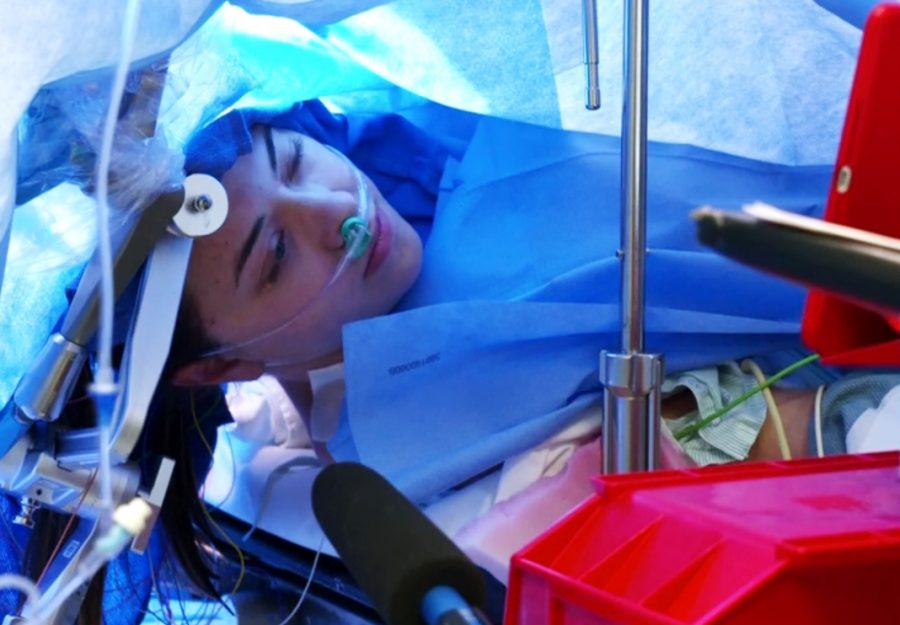Awake During Brain Surgery!
We can see here Jenna Schardt in the middle of the surgery lying down and appearing calm.
January 13, 2020
On October 29, Methodist Dallas Medical Center did a livestream of a brain surgery on Facebook. The patient is Jenna Schardt, and she agreed to do a livestream of the surgery, hoping that it will help people who have to undergo brain surgery in the future. However, the shock was that she was awake during the surgery.
Jenna Schardt is studying for her masters degree in occupational therapy and had been helping stroke patients at a rehab hospital. Although she began to experience symptoms similar to a stroke herself. She stated in the live, before the surgery, that she suddenly could not speak. Doctors found that she had tangled blood vessels in her brain which impaired her speech. The tangled blood vessels began to bleed, which caused irritation in her brain, causing her to have seizures, despite never having a previous history of seizures. In order to know whether or not the surgery will be successful, she had to be awake throughout the whole entire process (cnn).
The reason why Schardt had to stay awake is so that doctors can tell if they are damaging the speech or motor functions of the brain. The doctors must physically map out the brain while doing the surgery. Before they physically mapped out the brain, they gave Schardt anesthesia in order to cut open her brain, and they woke her up after that process was done. After waking her up, they gave her an iPad, and on the iPad were pictures and words they wanted her to read or identify. If she stopped while in the middle of talking when a portion of her brain is stimulated, the doctors knew they had to avoid that area of her brain (nbc). But how were they able to map out the brain?
The doctors have a certain GPS tracking system which is only used for the brain. With this device, they can map out the brain and determine which places should be avoided. It will also not cause any pain towards the patient since there are no pain receptors on the surface of the brain (nbc). Schardt was also quite calm during the entire process, and during the live, she had a casual conversation with a neuro monitor. After the surgery, she was put under intensive care so that the hospital can monitor whether or not there is internal bleeding or any seizures. Afterward, she will slowly go down the status to see if she can walk and eat normally. Overall, she is expected to be released within 3 to 4 days (cnn).
With at least 2,300 people watching this livestream, Jenna Schardt underwent a successful brain surgery. Sophie Zhang (10) said, “I think it’s a very brave and admirable decision to undergo the surgery while awake. I’m sure it loosened the fear of other people who also need to undergo similar procedures.”





















